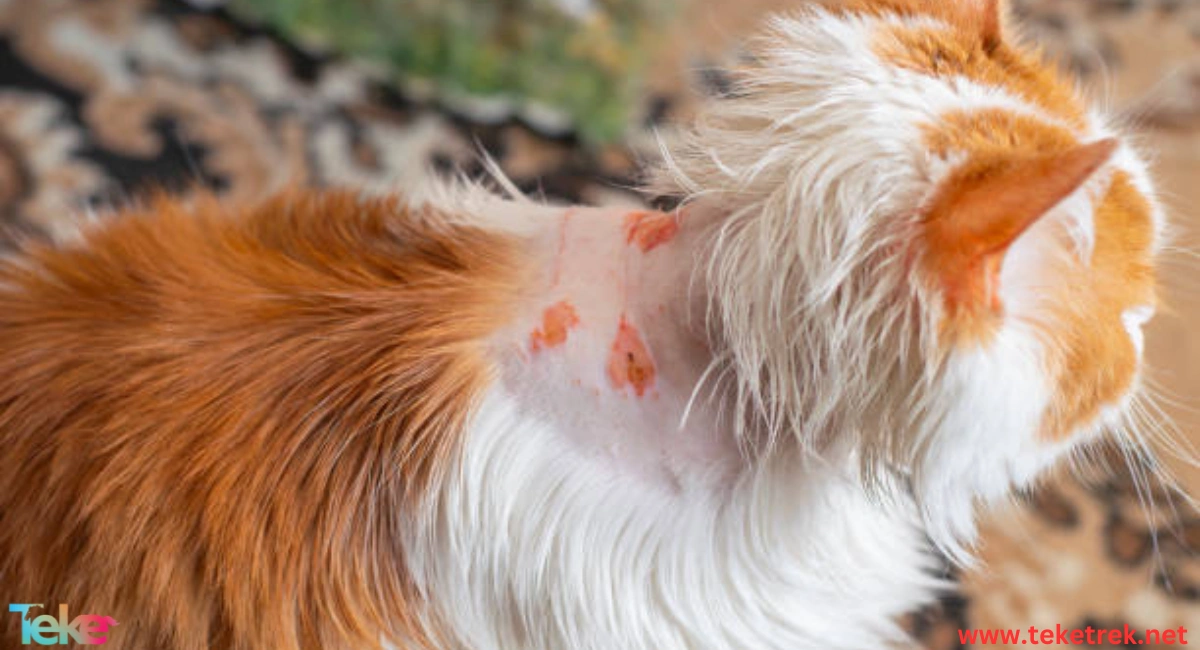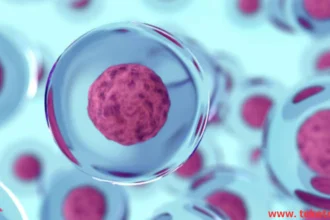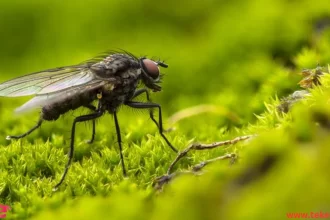Skin infections and skin diseases in cats occupy a prominent place in the thinking of breeders of this pet, as they are one of the common diseases that cats suffer from and that occur as a result of several factors.
When you see that your cat is grooming itself or scratching or scratching it intensely, you should know that it is suffering from a skin allergy that must be treated. Here you will have to seek help from a specialist veterinarian.
What are the most common skin diseases that cats suffer from? How is it treated? What are the underlying causes of cat hair loss? What are the most common skin fungi that you suffer from? We will answer these questions and many others in this article from teketrek. Follow along with us.
Your guide to skin infections and skin diseases in cats
At the beginning, we must point out that there are many symptoms that show that a cat is exposed to a skin allergy, such as: the appearance of small crusts, the presence of red or inflamed areas at large distances from the body, in addition to lesions on its abdomen, faces, or outside of its thighs, knowing that There are many types of skin infections, including: contact dermatitis, atopic dermatitis, and bacterial dermatitis. Below we will show you the most prominent skin problems that cats may suffer from:

Allergies:
The allergies that cats suffer from may appear in several forms, as they may be allergic to some substances, the most important of which we will mention as follows:
Food allergies, such as grains and dairy products, whose symptoms are redness, itching, and dermatitis.
Allergies resulting from environmental factors such as mold, dust mites, and pollen. When exposed to these environments, cats may develop an allergy to them, which may be seasonal.
Skin infections resulting from flea allergy. Once cats are exposed to a flea bite, they may develop an allergic reaction that causes skin inflammation and itching.
Read also:
Parasites
Parasites are among the factors that cause skin infections in cats, and here we can distinguish between two types of allergies as follows:
Fleas are small insects that suck blood through the skin, which then causes an itching and uncomfortable feeling for the cat. It is worth noting that there are many cats that suffer from an allergy to flea saliva.
Mites: There are two types: Demodex mites and ear mites. Ear mites grow in the ear and cause inflammation and severe itching. Demodex mites live in hair follicles, and their development may result in peeling of the skin and hair loss.
How to treat skin allergies in cats
The process of treating skin infections and skin diseases in cats depends on common therapeutic methods that we will mention below:
Control the allergy by identifying the real cause behind it and avoiding it. This may require a change in the cat’s diet in order to move away from the elements that cause the allergy. The doctor may also suggest using steroids and antihistamines in order to manage the symptoms.
Monitor mites and parasites, as the veterinarian may prescribe appropriate products to combat ticks and fleas.
The use of topical or oral medications in order to combat infection and reduce inflammation. It should be noted that when a cat is exposed to a case of contact inflammation, it is one of the basics of healing and recovery.
Alleviate annoying symptoms, such as itching and irritation, by using topical medications or ointments prescribed by your veterinarian.
Read also: Heart disease in cats: Understanding common heart diseases in cats
Causes of cat hair loss
Hair loss is one of the most prominent health problems that cats are exposed to, as it results from several factors, the most prominent of which we will mention below:
Cat hair loss due to ringworm
Ringworm is one of the most prominent causes of hair loss. It is a contagious fungal infection that occurs among cats that live in groups, kittens, and kittens. The main cause is due to the fungal spore, Microsporum canis, which may be transmitted from an animal or a contaminated environment, where its infection may persist for several months.
In ringworm, germs enter the cat’s skin through scratches, bites, or lesions, and the infection develops to the hair follicles and the outer layer of the skin. Diseases to which the cat may be exposed, which may lead to a weakened immune system, also play a role in transmission of the infection.
Its symptoms vary between cats, but it often appears in the form of circular or irregular spots in the area of hair loss, in addition to red spots on the skin and hair that breaks easily. It can be treated in several stages by sterilizing the cat’s environment and getting rid of any remaining spores in the house, in addition to The importance of consulting a veterinarian.
Read also: Heart disease in cats: Understanding common heart diseases in cats
Cat hair loss due to excessive grooming

Grooming is one of the methods that cat owners resort to to maintain the health and cleanliness of their skin, but it may have side effects such as hair loss. We find that the cat may use its rough tongue in order to rid its skin and coat of parasites, debris, dead hair, and other irritants, as it It is possible that her tongue will lead to hair loss. When it is done excessively, you will see in the same spot that it has become hard and the hair has become weak.
Cat hair loss due to the diet it follows
This happens when the diet does not contain all the nutrients necessary to maintain good health. The cat’s hair and skin need large amounts of protein, as it uses about 30% of its daily quota of protein, so a deficiency of this element may cause weakness in the hair. In addition to the necessity of vitamin A and vitamin E for this matter, because they act as natural antioxidants and work to regulate cell growth, and their deficiency leads to problems in cats’ production of the important hair substance creatine.
Identifying skin fungi in cats
Skin fungi in cats are skin infections and skin diseases in cats. They occur as a result of a fungal infection through inhalation, ingestion, or absorption through the skin, perhaps the most prominent of which are: (rhinosporidium, South American blastomycosis, mycosis, cryptococcosis, histoplasmosis, Aspergillosis, gypsum fungus) and many other fungal diseases that require consulting a veterinarian when they occur.
In conclusion, knowing skin infections and skin diseases in cats and treating them in a timely manner are among the most important things that the owner of this cute creature must pay special attention to.





